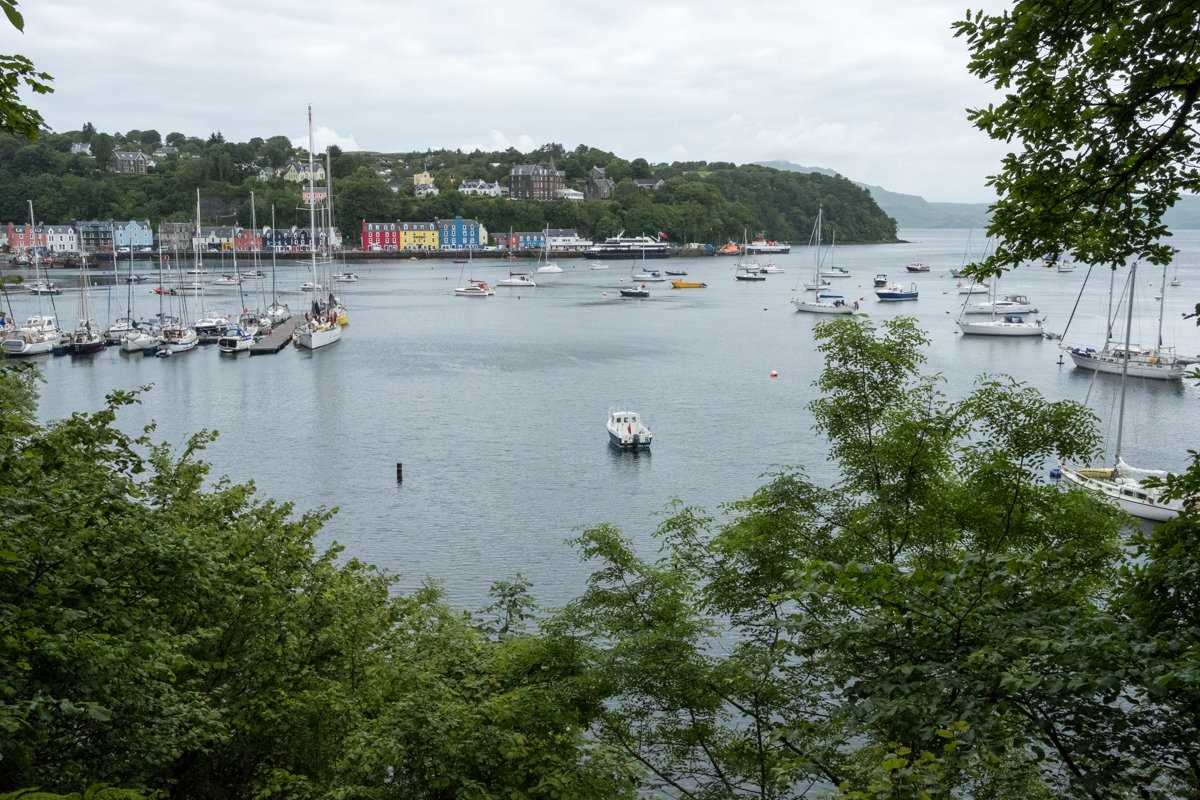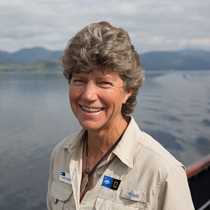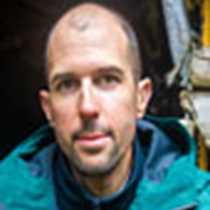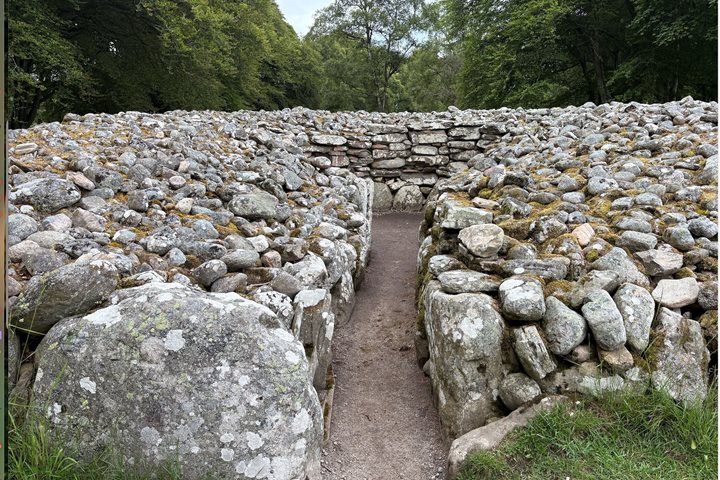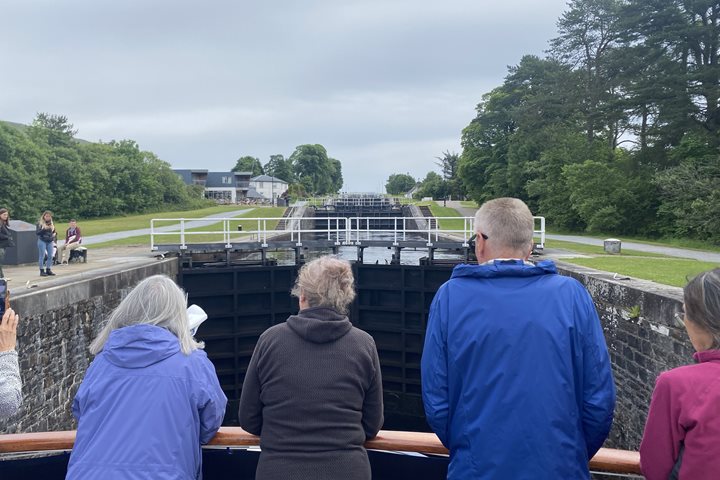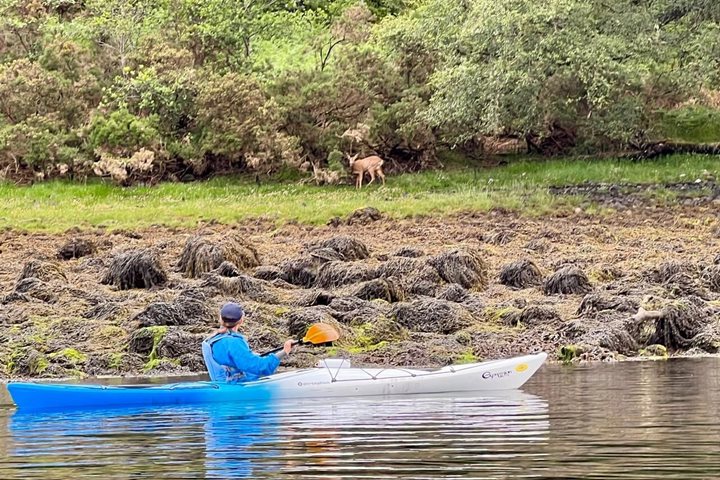Morning found us enjoying the pleasant town of Tobermory, with its cheerful waterfront display of multi-colored buildings. A few guests set off on a coastal trail with Eric and Robin, walking out to a waterfall, while others explored the area independently. The coastal vegetation is an example of the Atlantic rain forest, a lush forest dripping with moss and lichen that’s made possible by the Atlantic Gulf Stream that buffers the climate for Scotland, giving milder winters and cool summers.
Joining us during the morning was Ella Potts from the Hebridean Whale and Dolphin Trust (HWDT), an organization that works for the conservation of whales, dolphins, and porpoises across the Hebrides. As we sailed out from Tobermory, Ella gave a presentation on the work of the HWDT. Their programs include monitoring Scotland’s killer whale population and supporting a community wildlife sightings network, in which they train local people to collect information on the surrounding marine environment. Recently, HWDT’s research resulted in the creation of a Special Area of Conservation designed to protect harbor porpoises.
The wind picked up as we rounded the point of the Ardnamurchan Peninsula with its lighthouse perched on the most westerly point of the British Isles. Ella stood watch as the boat rocked and rolled its way to Armadale, but the only marine mammal sighted was a minke whale seen by the captain and crew up in the bridge. We did observe Manx shearwaters, gannets, terns, razorbacks, and guillemots as we sailed – these are tough birds to be out in the stormy weather! The Manx shearwaters are common in this area at this time of year. They have one of the largest colonies on the planet on the nearby island of Rum. During winter they migrate to the coast of South America, a long flight for a small bird.
The extremely rough seas meant our original plan to visit the Isle of Eigg had to change and so instead we made our way directly to Armadale on the Isle of Skye. Once we were peacefully docked, Robin gave a recap on the Manx shearwaters, and Ella ended our day with an informative talk on the killer whale research done by the HWDT.

